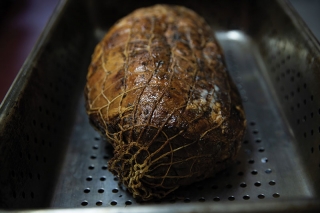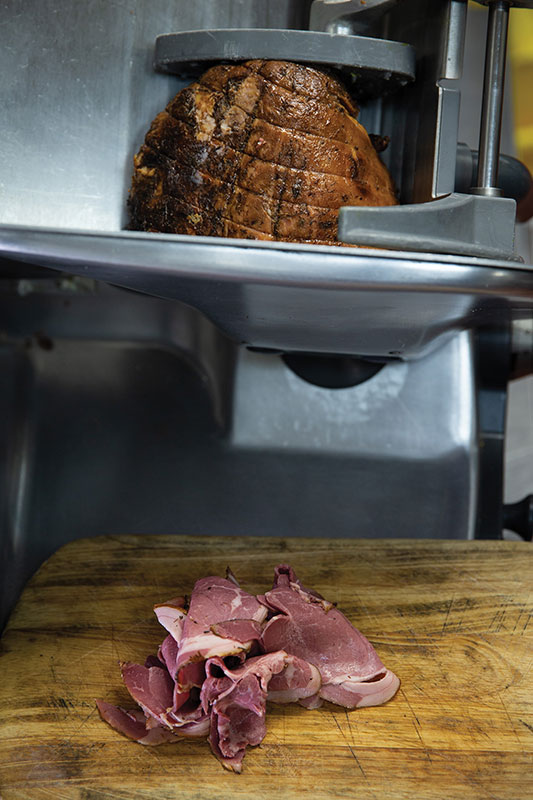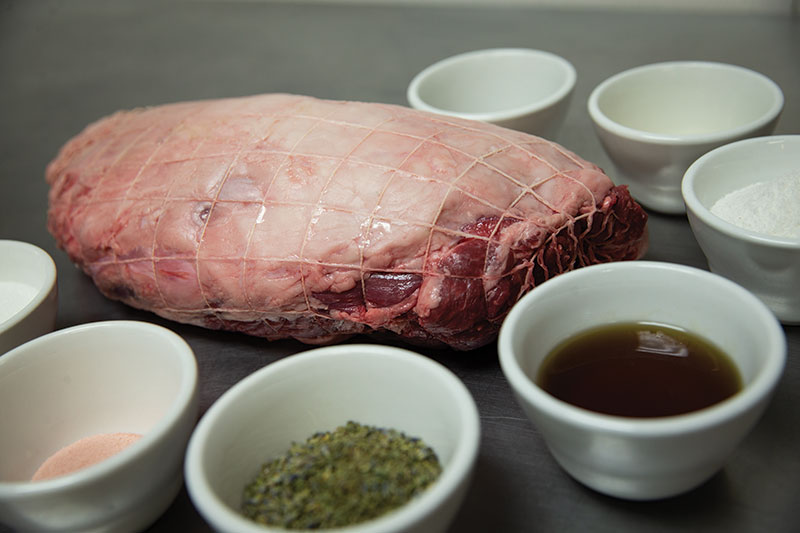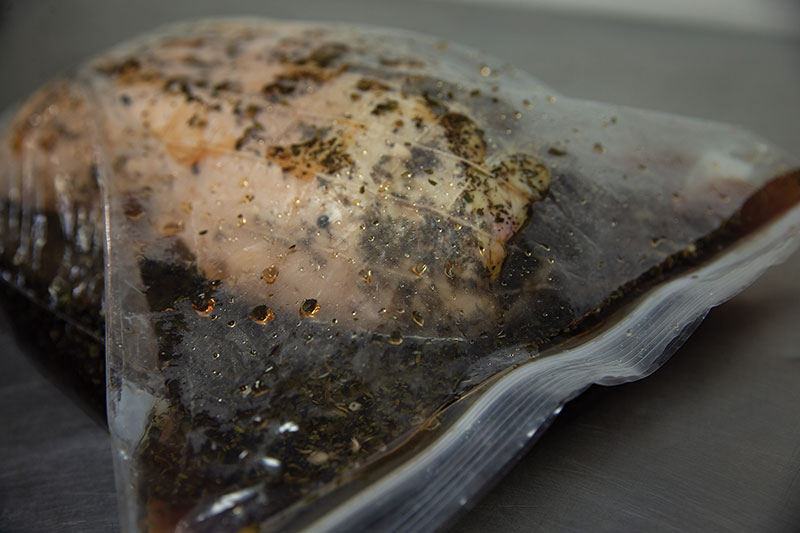
Make Mine a Lamb Ham
27 March 2020Interest in meat preservation brings lamb hams back to menus.
 Lamb ham was a fixture in colonial times, before being replaced by the larger pork ham. As chefs are exploring techniques for meat preservation, lamb ham is reappearing on today’s menus.
Lamb ham was a fixture in colonial times, before being replaced by the larger pork ham. As chefs are exploring techniques for meat preservation, lamb ham is reappearing on today’s menus.
Ham is generally defined as the upper part of the animal’s leg which is preserved by wet or dry curing, with or without a smoking process.
“The lamb leg at 8 to 12 lbs. offers lean, rich cuts with an external fat layer which contributes amazing new flavor for hams,” said Mark DeNittis, former culinary instructor and food consultant. “Smaller in size than pork, drying and cooking times are both minimized, allowing operators to put lamb ham cuts on the plate quicker.”
 Curing is the process of using salt and sodium nitrite alone or with additional flavorings or sugar to preserve meat. “Curing provides color as well as flavor,” said DeNittis. “Many of today’s producers are applying the use of celery or beet juice powder as a proven natural alternative replacement to traditional sodium nitrite.”
Curing is the process of using salt and sodium nitrite alone or with additional flavorings or sugar to preserve meat. “Curing provides color as well as flavor,” said DeNittis. “Many of today’s producers are applying the use of celery or beet juice powder as a proven natural alternative replacement to traditional sodium nitrite.”
Drying is a method that involves the use of salt, in combination with air and an extended period of time, to dehydrate the protein in the food. Hams are salted and dried by first covering the meat completely with salt or a salt cure (or uncured) mixture. The length of curing time depends on the size of the meat and its composition.
 Wet curing, also known as immersion curing, is a curing method that submerges the meat in a brine. Immersing the meat into a brine solution and refrigerating it for several hours or days allows the brine to be absorbed.
Wet curing, also known as immersion curing, is a curing method that submerges the meat in a brine. Immersing the meat into a brine solution and refrigerating it for several hours or days allows the brine to be absorbed.
Most hams are also cold or hot smoked. Cold smoking (usually below 120 degrees F) imparts flavor, but doesn’t fully cook the meat, said DeNittis. Hot smoking (usually above 200 degrees F) imparts flavors, provides color, cooks to a safe internal temperature of 145 degrees F and in some cases even breaks down the muscle fibers making it fork tender, he said. In professional kitchens, this can be done using a gas or electric smoker.
If you do not have a commercial smoker, Chef Jason Bush of Locality Kitchen and Bar in Fort Collins, Colo., recommends making your own smoker using a hotel pan and a perforated rack pan to fit inside, keeping it raised off the bottom. Chef Bush inserts hickory wood chips into the bottom of the pan, lights them and sets the pan on a stove top. He places his wet cured Colorado Lamb Ham (recipe follows) on top, covers with foil and lets it smoke for one hour before transferring the lamb leg to the oven for slow roasting.
“We wanted a Colorado twist on a classic French dip sandwich,” says Bush. “Instead of using roast beef, we decided to cook a lamb ham using a boneless Colorado lamb leg.” Chef Bush says he chills the lamb leg and slices it as needed for sandwiches, warming lamb ham on stove top with lamb au jus.
Chef Bush says he likes the nod to cultural preservation of meat and his customers have responded well to the Colorado Lamb Ham French Dip which is made with the house--cured lamb ham and white cheddar cheese on a hoagie bun and served with lamb au jus and mustard aioli. “Besides our burger, this sandwich is our best-selling item” he says.
In addition to using the lamb ham on the sandwich, Bush says he has also has used lamb ham for Eggs Benedict specials. “Wherever you might use pork ham, you can use lamb ham,” he says.
Click here for Colorado Lamb Ham recipe.
Chef DeNittis notes that steps used to make lamb hams can be applied to individual lamb leg muscle cuts. He developed a Bresaola made with lamb rather than beef which he playfully calls SaLambi Bresaola.
Click here for the SaLambi Bresaola recipe.
Chef’s Tips:
- Adjust and experiment with ingredients, flavors and liquids for even more exciting creations. Consider cold smoke prior to hanging/drying to enhance flavor.
- Dry away from strong odors.
- Monitor airflow closely. Too much airflow may cause case hardening, where the exterior hardens so much it does not allow the moisture inside to escape creating an unsafe environment and the meat will not dry. Too little airflow and/or too much relative humidity may cause undesirable sticky tacky surfaces that may harbor pathogen growth.
Chef DeNittis stresses food safety and sanitation when learning and experimenting with curing and smoking. He notes that pathogens which may be found in meat are all destroyed by proper handling and thorough cooking to an internal temperature of 140 or 160 degrees F, depending on the meat cut. He also recommends culinary students and chefs reference the books available on curing as well as many resources available from USDA/FSIS for further information.
For more information on American Lamb, please visit www.americanlamb.com.
